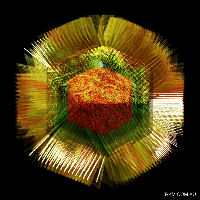Looking at protists as a source of pathogenic viruses
In the environment, protozoa are predators of bacteria and feed on them. The possibility that some protozoa could be a source of human pathogens is consistent with the discovery that free-living amoebae were the reservoir of Legionella pneumophila, the agent of Legionnaires’ disease. Later, while searching for Legionella in the environment using amoeba co-culture, the first giant virus, Acanthamoeba polyphaga mimivirus, was discovered. Since then, many other giant viruses have been isolated, includingMarseilleviridae, Pithovirus sibericum, Cafeteria roenbergensis virus and Pandoravirus spp. The methods used to isolate all of these viruses are herein reviewed. By analogy to Legionella, it was originally suspected that these viruses could be human pathogens. After showing by indirect evidence, such as sero-epidemiologic studies, that it was possible for these viruses to be human pathogens, the recent isolation of some of these viruses (belonging to the Mimiviridae and Marseilleviridae families) in humans in the context of pathologic conditions shows that they are opportunistic human pathogens in some instances.
Mimivirus picture courtesy of Russell Kightley Media
Source: www.sciencedirect.com
See on Scoop.it – Virology and Bioinformatics from Virology.ca
